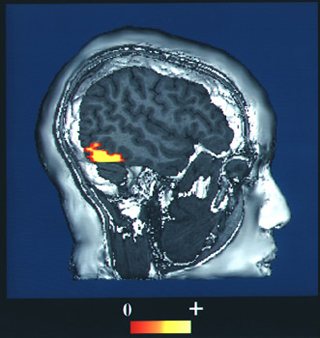
A computer-enhanced fMRI scan of a person looking at faces. The image shows increased blood flow in the part of the visual cortex that recognizes faces. (Image courtesy of the U.S. National Library of Medicine Web site.)
Instructor(s)
Prof. James DiCarlo
Prof. Nancy Kanwisher
MIT Course Number
9.916
As Taught In
Spring 2005
Level
Graduate
Course Description
Course Description
Understanding the brain's remarkable ability for visual object recognition is one of the greatest challenges of brain research. The goal of this course is to provide an overview of key issues of object representation and to survey data from primate physiology and human fMRI that bear on those issues. Topics include the computational problems of object representation, the nature of object representations in the brain, the tolerance and selectivity of those representations, and the effects of attention and learning.


